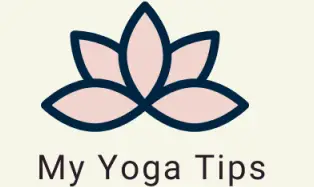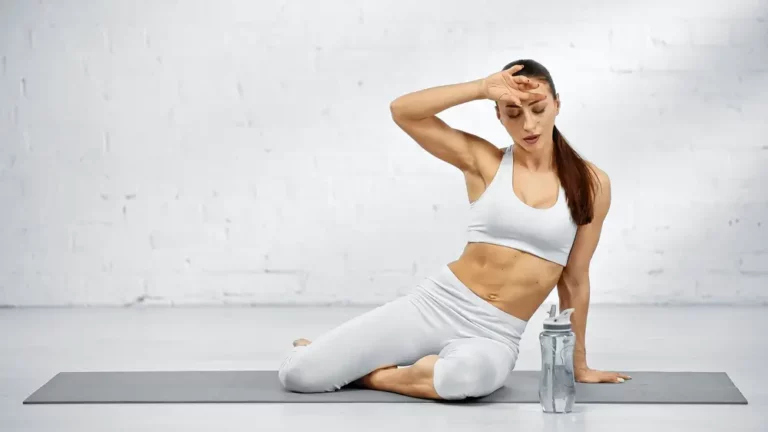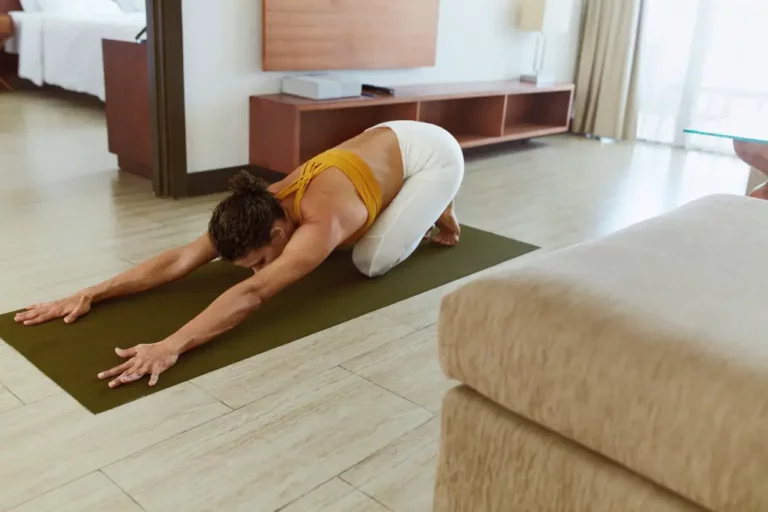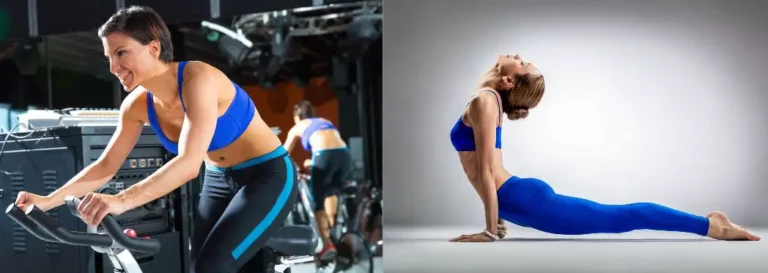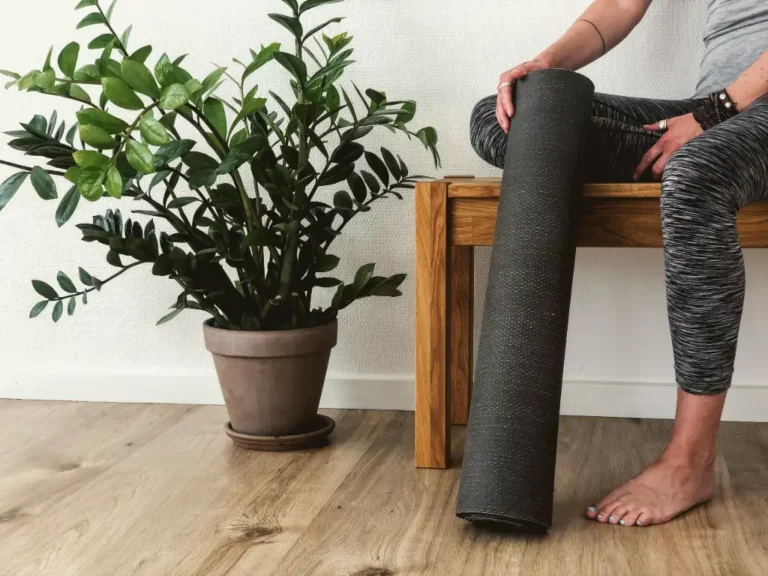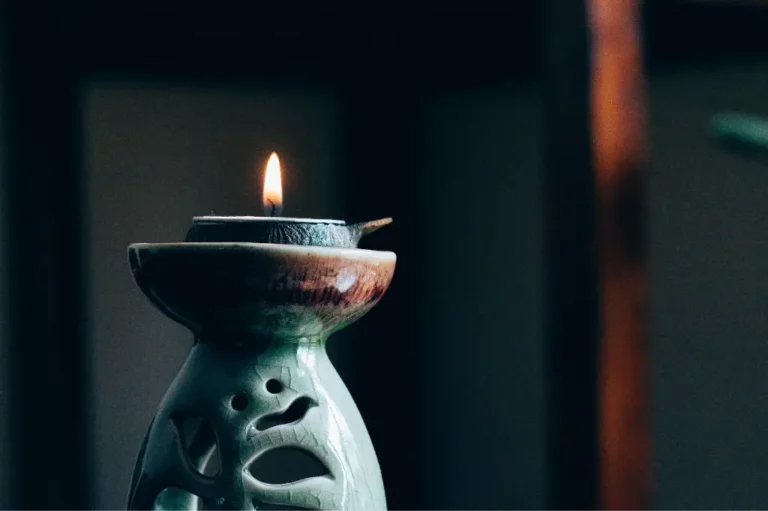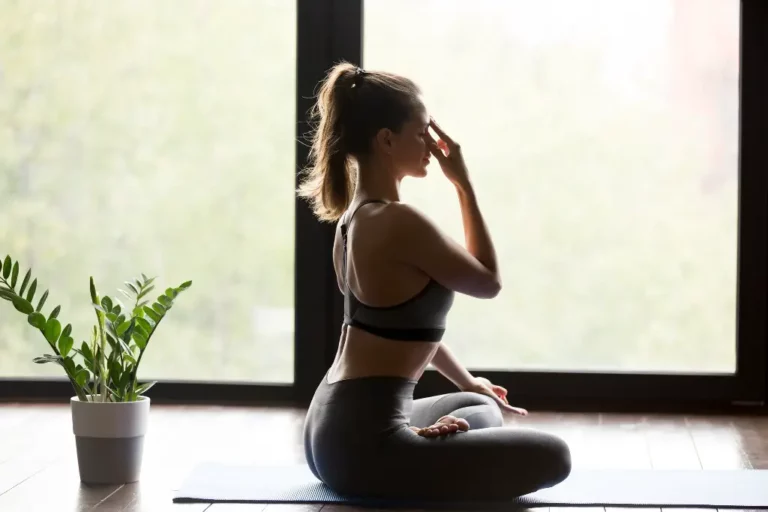Here’s What Downward Dog Should Feel Like
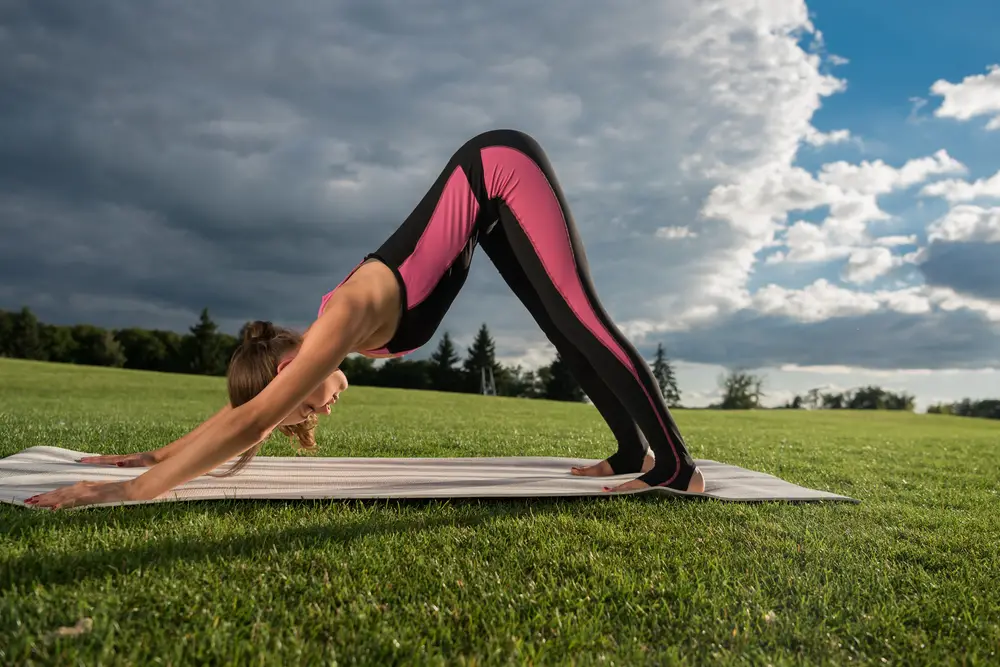
Downward dog can feel challenging when you are a new yogi. You may be struggling to get comfortable in downward dog. Here, we explain what downward dog should feel and look like.
In downward dog, you should feel an opening of your shoulders and a stretch down the backs of your legs, particularly in the hamstrings and calves. It’s okay to bend at the knees! Your spine and neck should feel long and straight. Your thumbs and index fingers should feel pressed into the mat.
Downward dog is one of the foundational postures in yoga, but just because it is common, it does not mean it is straightforward. The pose engages all your major muscle groups, and it requires strength, flexibility, and good technique. There is no “correct” way to do downward dog. Everybody looks different in the pose. The key to getting the most benefit out of downward dog is focusing on how your body feels in the posture.
What Should Downward Dog Look Like?
Downward dog pose looks different for everyone. An experienced yogi who has great shoulder and ankle mobility will look quite different in downward dog than a person who is new to yoga and is still developing their strength and flexibility.
With this in mind, the basics of downward dog are the following:
- The spine is long and straight, from the neck down to the tail bone.
- The hands are actively pressing into the mat (thumb and index finger making an L shape).
- Shoulders are engaged with the shoulder blades drawing together.
- The head is below your heart, between your upper arms.
- The chest is drawn down towards the mat.
It is not necessary for your heels to touch the mat or for your legs to be straight! The longer your practice yoga regularly, the more the muscles in your hamstrings stretch. Eventually, you will be able to straighten your legs, and your heels will touch the ground without your lower back rounding.
The priority in downward dog is for the neck and spine to be nice and long and straight. Imagine a straight line from the palms of your hands, up your arms, through the length of your spine. Bend the knees as needed to open the shoulders and keep the back straight.
How Should You Feel During Downward Dog?
Yoga is not just about bending one’s body into different shapes. Many newcomers to yoga are discouraged by the fact that they cannot get their postures to look the same as their instructor’s.
The truth is yoga postures look different for everyone. It is more about how the postures feel than how they look. Rather than looking at other people in your yoga class and comparing yourself, focus on what downward dog should feel like.
In the downward dog pose, you should feel:
- An opening of the shoulders and a stretch across the collarbone as your heart sinks down toward the mat.
- The hands (mainly the thumb and index finger) press down firmly into the mat as the elbows are externally rotated. The creases of your elbows should each face opposite corners of the yoga mat.
- The shoulders draw together and down your back, away from the ears so that the neck is long.
- The muscles in the core are active. It should feel like you are scooping your belly button upwards towards your spine.
- The spine should feel long and tall, from your tailbone to your neck.
- The thighs should feel as if they are being drawn towards your tummy.
- Feel a stretch down the backs of the legs, especially as you push the heels downward.
As you practice downward dog, keep this list of things in mind. Check in with your body and bend your legs as needed so that the posture feels right.
How To Get Into Downward Dog Pose
Now that you know what downward dog should look and feel like, we’ll explain how you should prepare your body for this posture and how you get into downward dog pose.
Start by warming up a little to get your wrists, shoulders, and spine ready for downward dog. Do a few repititions of cat and cow, do a shoulder opening stretch against a wall, and rotate your wrists and ankles.
Go through the following steps to get into downward dog:
- Get down onto your hands and knees, with your knees directly below your hips, your hands as wide apart as your shoulders and slightly in front of your shoulders.
- Activate your hands, spreading your fingers wide and pressing down into the mat with your thumb and index finger.
- Rotate the upper arms so that your elbow creases each face opposite corners of the mat (notice how your shoulder blades draw together and down your back and how your collarbones feel broad).
- Engage your lower abs, scooping your belly button upwards.
- Take a few long breaths here before you lift your hips up.
- Tuck your toes, and lift your hips upward, lifting your bum up as high as possible. Focus on lengthening your spine.
Common Mistakes With Downward Dog
Many beginner yogis struggle with the downward dog pose because there is a lot to focus on with this posture. These are the most frequent errors:
- Trying to straighten the legs and get the heels touching the mat at the expense of the back rounding. It is far better to bend the knees as much as necessary to keep the spine long and straight.
- Walking the hands too close to the feet to try and get the heels down on the mat. This causes rounding of the spine, which can be dangerous.
- Shoulders are scrunched up near the ears. Weakness of the upper body causes this. Perform modified push-ups and pull-ups, as these are the best exercises to build upper body strength.
- Ignoring pain in the wrists. Downward dog takes a lot of wrist flexibility, and this does not develop overnight! To ease the impact of this pose on the wrists, place yoga blocks or foam wedges under the hands.
Read my article about 6 Ways To Make Your Yoga Routine Actually Stick
Conclusion
Downward dog is highly beneficial, and correctly doing it allows you to get the most out of the pose. In a downward dog, you should feel your shoulders open, your chest broaden, and your spine straighten and elongate. The core should be tight, and the knees should bend so that you feel the thighs being drawn towards the belly.
